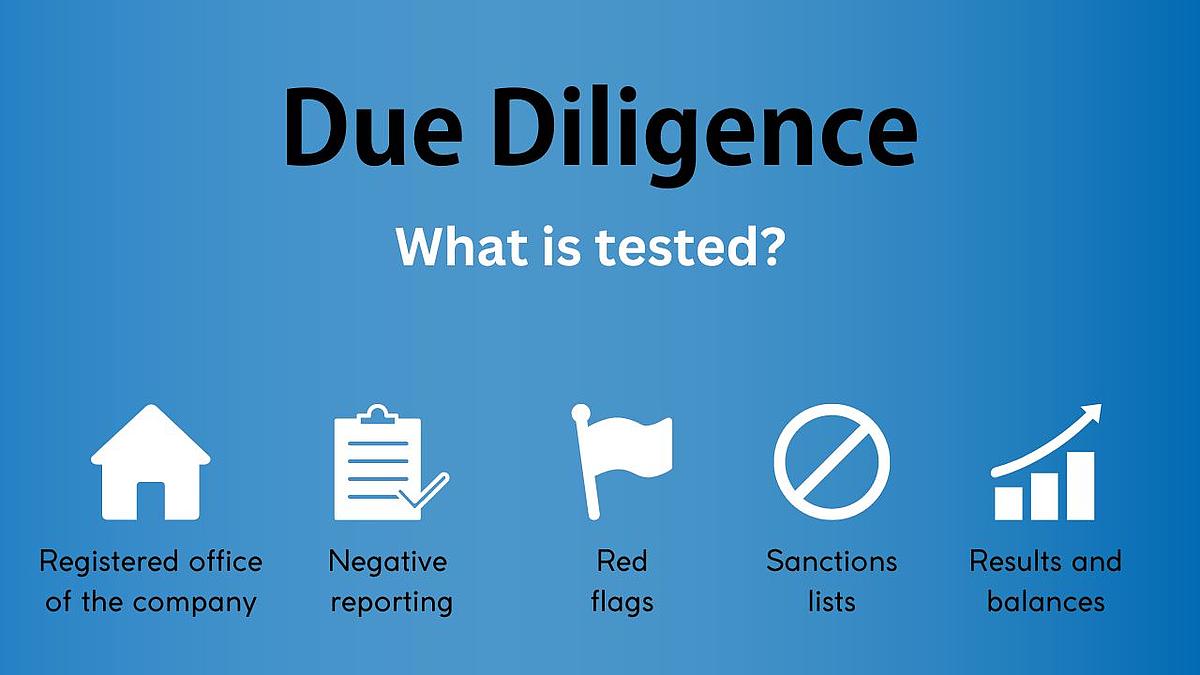This Website uses cookies to improve your visit on our website. More Info
- MBS QUICK FACTS:
- Nationally recognized since 1999
- Accreditation by the German Council of Science and Humanities
- Study Location: Munich
- Top scores in numerous rankings
Interested in Studying Business Administration?
Due Diligence refers to the process of thoroughly investigating and evaluating information about a company, person, product or service before making a decision that has a financial or legal impact. The goal of due diligence is to gain a comprehensive understanding of the relevant facts, risks and opportunities in order to make informed decisions.
Typically, due diligence includes an evaluation of financial data, business plans, operational processes, legal and regulatory matters, technical data and other relevant information. Conducting thorough due diligence is particularly important in mergers and acquisitions, investments in companies, initial public offerings, real estate acquisitions and other business transactions to identify potential risks and opportunities and lay the groundwork for a successful transaction.
Due Diligence refers to the process of thoroughly investigating and evaluating information about a company, person, product or service before making a decision that has a financial or legal impact.

| Aspect | Description |
|---|---|
| Purpose | Investigating information about a company, person, product, or service to identify potential risks and opportunities and make informed decisions |
| Types | Financial due diligence, technical due diligence, IT due diligence, tax due diligence, legal due diligence, environmental due diligence |
| Scope | Depends on the nature of the transaction and specific needs |
| Process | Conducting interviews, evaluating documents and data sets, reviewing systems and processes, reviewing contracts, identifying risks and opportunities. |
| Timeframe | Depends on the scope of the investigation, can take several weeks to several months. |
| Costs | Can vary widely, depending on the scope, type of investigation, location of the company and who performs the investigation. |
| Results | Identification of potential risks and opportunities, assessment of company values and assets, basis for informed decisions |
| Areas of application | Mergers and acquisitions, investments, initial public offerings, real estate acquisitions, joint ventures, licensing agreements, outsourcing agreements and other business transactions |
Interested in Studying Business Administration?
Due Diligence is usually performed to identify and evaluate potential risks and opportunities related to a company, person, product or service. This helps in decision-making in various business areas such as mergers & acquisitions, investments, IPOs, real estate purchases, joint ventures, licensing agreements and outsourcing contracts.
Due Diligence can identify potential problems or risks at an early stage, which can lead to better negotiation results and more informed decisions. In addition, conducting due diligence can help build trust between the parties and put the relationship on a solid footing. Overall, conducting due diligence helps minimize business risks and maximize the potential for a successful business relationship.

Interested in Studying Business Administration?
There are various forms of business partner review, which may have different emphases depending on the objective and scope of the review. Some of the common forms of business partner verification are:
These forms of business partner screening can be conducted individually or in combination to obtain a comprehensive picture of the business partner.
| Step | Description |
|---|---|
| 1 | Planning Due Diligence: Identifying the objective, defining the scope and necessary resources. |
| 2 | Information gathering: collecting information about the business partner, including financial information, legal documents, customer and supplier relationships, and other relevant data |
| 3 | Information analysis: analyzing the information collected to identify risks and opportunities. |
| 4 | Identification of vulnerabilities: Identification of vulnerabilities and potential risks in the business partner and its business practices. |
| 5 | Development of measures: Development of measures to mitigate risks and take advantage of opportunities |
| 6 | Reporting: preparation of a report summarizing the results of the due diligence process |
| 7 | Monitoring: monitoring the business partner and its business practices to ensure that identified risks and vulnerabilities are addressed |
A due diligence report is typically a comprehensive report that summarizes the results of a due diligence review. The structure of the report can vary depending on the company and the type of audit, but typically a due diligence report includes the following sections:
Please note that this is only a general overview and that the exact content and structure of a due diligence report may vary depending on the company and the type of audit.
Enhanced Due Diligence (EDD) is an extended form of due diligence that is usually applied to business partners where there is a higher risk due to certain factors. Factors such as the industry, the business partner's country of origin, the business model, the size of the company and other risk factors may play a role.
Unlike standard due diligence, which is typically more superficial and focuses on general information and data, EDD goes deeper and can include specific investigations to identify risks. For example, this may include reviewing public sources, conducting background checks, analyzing transaction histories, identifying politically exposed persons (PEPs), and reviewing anti-money laundering (AML) controls.
EDD is typically applied by organizations to ensure that they do not enter into business with counterparties that are involved in illegal activities, such as money laundering, terrorist financing, or fraud. EDD may also be required by regulators and supervisors to ensure that organizations comply with their AML and KYC obligations.
Interested in Studying Business Administration?
Due diligence is typically required in situations where a decision is being made that may have a financial or legal impact, such as mergers and acquisitions, investments in companies, initial public offerings, real estate purchases and other business transactions. By conducting thorough due diligence, potential risks and opportunities can be identified to make informed decisions and lay the groundwork for a successful transaction.
Technical Due Diligence refers to the review and evaluation of the technical aspects of a company, product or service as part of the due diligence process. This process aims to perform a comprehensive assessment of the company's technical infrastructure, systems, processes, patents and other technical aspects to identify potential risks and opportunities.
Typically, technical due diligence includes a review of design documentation, technical specifications, system architecture, software development methods and tools, database design and management, hardware and network configurations, and security measures. The process is particularly important in acquisitions, investments in technology companies, and other business deals where the company's technology and technical infrastructure play an important role.
IT Due Diligence refers to the examination and evaluation of a company's IT systems, IT infrastructure and IT security measures as part of the due diligence process. The aim of IT due diligence is to identify and evaluate potential risks and opportunities relating to the company's IT systems and infrastructure in order to make informed decisions.
Typically, IT due diligence includes an assessment of the company's IT systems, network infrastructure, applications, databases, security measures and IT organization. The process is particularly important in acquisitions, mergers and investments in technology companies, as well as in the evaluation of IT outsourcing and cloud computing contracts.
The cost of due diligence can vary widely depending on the scope and nature of the investigation, the location of the company, and other factors. A due diligence can cost several thousand to several hundred thousand euros or even more.
Costs also depend on who performs the due diligence. If a company performs due diligence internally, the cost of staff and resources may be higher, while external consultants, lawyers or auditors may charge higher fees for their services.
However, it is important to note that the cost of due diligence can be relatively small compared to the cost of a bad decision or an unexpected complication due to undiscovered risks or issues.
During a due diligence review, various aspects of the company, such as its finances, technical systems and processes, IT infrastructure, legal and tax matters, environment and other relevant factors are examined and evaluated.
The results of a due diligence review are usually summarized in a report containing the identified risks and opportunities as well as recommendations and assessments. The report is then used to make informed decisions, for example with regard to mergers & acquisitions, investments or other business transactions.
Conducting due diligence can be done internally or externally and can be done by a variety of professionals, including consultants, attorneys, accountants, engineers, environmental experts and others.
When conducting due diligence, there are a number of factors to look for to ensure that all relevant areas of the business are examined and potential risks and opportunities are identified. Here are some important aspects to look out for:
It is important that all of these aspects are considered when conducting due diligence to ensure that all relevant areas of the business are examined and potential risks and opportunities are identified.
Our Bachelor's and Master's Degree Programs will provide you with relevant knowledge and skills you need for a successful career.
Did you find this article helpful? Do you have any suggestions or questions about this article? Did you notice something or is there a topic you would like to learn more about in our dictionary? Your feedback is important to us! This helps us to constantly improve our content and deliver exactly what you are interested in.
Contact editorial office